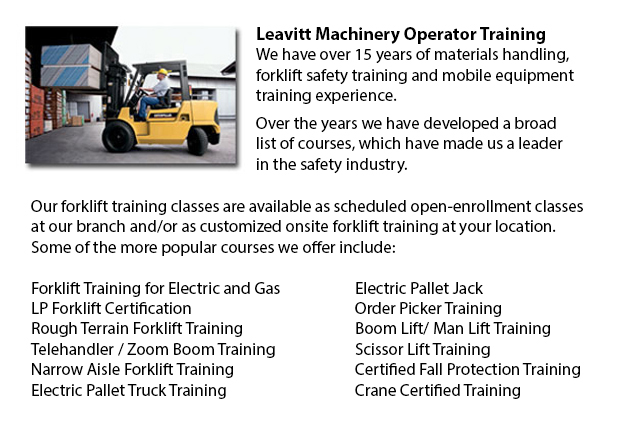
There are in reality two classifications of lift trucks within the manufacturing business, the rough terrain model and the industrial version. Rough terrain lift trucks appeared in the 1940’s intended primarily for use on irregular roads, best for lumberyards and building sites, offering hauling power when there was no paved surface existing.
Usually, the majority of rough terrain lift trucks are run on a propane, diesel or gasoline driven internal combustion engines with a battery used for power. Some suppliers are experimenting with rough ground forklifts that consume vegetable matter and run from ethanol. Large pneumatic tires with deep treads typify these lift trucks to allow them to grab onto the roughest ground type devoid of any misstep or sliding.
The most basic designs of rough terrain lift trucks were able to transport weights of up to 1000 lbs, using blades that could run under the item, lift it a tiny bit and then move it to another location. After a decade on the market, rough terrain forklifts had been given additional shipping strength to about 2000 lbs capacity. Telescoping booms were added in the 1960’s, enabling them to stack supplies much higher than in preceding years. The telescoping model characteristic is a staple of nearly all rough terrain forklifts today. Present models are capable of managing well over 4000 lbs thanks to the continuous enhancements through the years. Telescoping ability has also improved with some models attaining a height of 35 feet. Worker safety has also become a focus with some rough terrain lift trucks now manufactured are equipped with an enclosed cab for the operator, as opposed to the older open air seating capacity.
The rough terrain lift trucks available these days work equally as well on covered floors as on unpaved roads. These all terrain forklifts are being marketed for their versatility allowing establishments to move parts from outside the plant to the inside or vice versa.
-
Toyota Forklift
In the U.S., Toyota Materials Handling inc., or TMHU, continues to be the best selling lift truck provider since 1992. This business has been headquartered out of Irvine, California for well over 40 years, providing a wide-ranging line of quality lif... More -
Aerial Lifts
Aerial lifts can be utilized to accomplish numerous distinctive tasks done in hard to reach aerial spaces. A few of the duties associated with this style of lift include performing daily maintenance on structures with prominent ceilings, repairing ph... More -
Scissor Lifts
The scissor lift or platform lift, is a mechanized industrial lift that has been tailored to be used in retail, wholesale, manufacturing and production settings. Industrial scissor lifts have been used mainly within production and manufacturing facil... More -
Komatsu Forklift
Komatsu Forklift U.S.A. Inc. has a very good reputation for building dependable and resilient forklifts. Komatsu is recognized around the globe as a corporation with a prosperous heritage while preserving an outstanding benchmark of innovation and qu... More -
Boom Lifts
Boom lifts are equipment that has a platform that could be lowered or raised to many heights, thus making this piece of equipment an important necessity in a wide variety of professions. Offered in quite a few specific types such as aerial hoists, sc... More

Forklift Training Marysville
TOLL FREE: 1-888-254-6157
Marysville, Washington
forklifttrainingmarysville.com
Email Us
About Us


